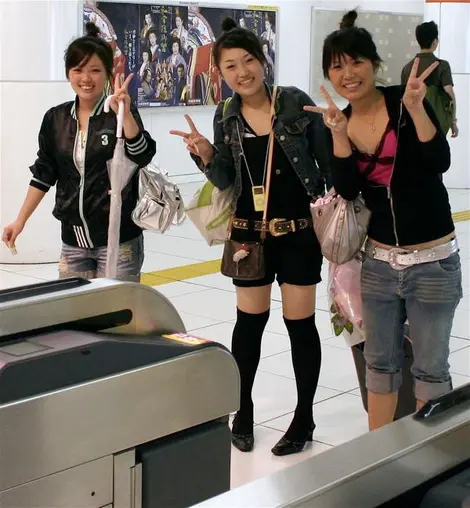Typical Japanese Gestures 日本人のジェスチャー
Understanding body language
We all know the Japanese bow to say hello, thank you, goodbye and many other things. However, Japanese culture is full of other unique gestures, too.
The story of the city of Babel and its tower has taught us one thing - that it's very difficult to communicate with your neighbor when you do not share a common language. Fortunately, there are some international gestures that we are all supposed to understand... supposed to.
But have you ever noticed that some Japanese gestures are not found anywhere else? Perhaps you have found yourself baffled by one of these gestures during an interaction with a Japanese person.
Don't panic, we're here to explain the most common Japanese gestures!
Island effect
That Japan is an island, and was closed off to the outside world for a period of more than 200 years is what has allowed it to produce a very unique culture. For example, particularly Japanese gestures.
- Bowing
Amongst these gestures exclusive to the country of the rising sun, some are of course well known, such as bowing. We often have an image of a "salaryman" (company employee in suit and tie) greeting his colleague by bowing repeatedly. Seemingly a simple gesture, it is in fact very codified and differs according to hierarchical status, age difference, and so on.
- The V sign
Other gestures are used elsewhere in the world but without having the same meaning. This is the case for the victory (or peace) sign: the two raised fingers making the V sign. This gesture became world famous after World War II, and can be seen in almost all casual Japanese photos. Why, you say? It started with a young pop singer, Jun Inoue, making this sign during a commercial for Konica, so it's actually nothing to do with the Second World War.
- Pointing at your nose
Question: if a Japanese person points at their nose, are they actually speaking of their nose? They are most likely referring to their whole self; in short it's a way of saying "me". In the west, we generally point to our chest rather than our nose. It is interesting to note that these are the same respective actions in the Japanese and English sign languages.
Other examples of Japanese gestures are more difficult to interpret:
- Agreement is expressed by forming a circle with your thumb and index finger (a similar sign is used in diving). But beware, it can also mean money!
- In contrast, "no" or refusal is shown by forming an X with your forearms.
- Index fingers pointed up on both sides of the head, as if to form horns, show that you are angry.
- Someone embarrassed will rub the back of his head with his palm.
- Someone wishing to make their way without disturbing people will place his hand, fingers raised and tightened, perpendicular to the level of his face, continuing to walk while looking down.
- To express that whoever is speaking is wrong, or that you disagree with their behavior, wave your hand in front of our nose as if something smells. This gesture also means "no worries".
- Rubbing your brow after wetting your finger signifies that your do not believe the words of your interlocutor.
- Finally, note that holding up your pinky finger signifies that you're referring to a girlfriend, mistress or female love interest!













